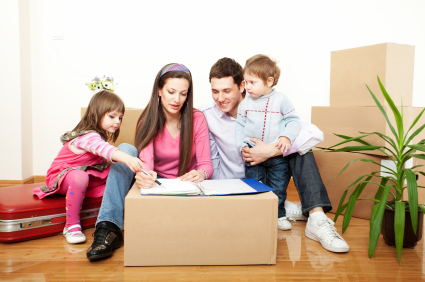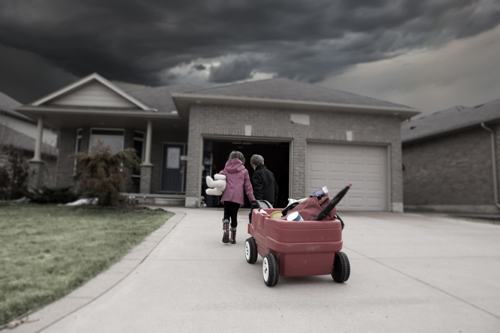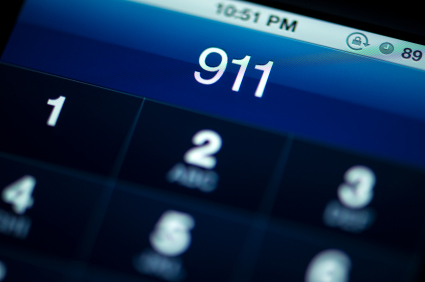Home

Home Insurance

Evacuation

Shelter-In-Place

Technology
Home Insurance: Are you insured against natural disasters?
Lightning, tornadoes, hail, violent winds and other weather events called “acts of God” can affect anyone. Is your home insured against these natural disasters?
Contact your insurance company to review your individual coverage.
Most home insurance policies automatically cover damage caused by these “unpredictable” weather events. But what damage is covered — and what’s not — varies from policy to policy.

Here is a list of what is generally covered in a standard insurance policy.
- Wind damage – if a tornado tears off a part of your roof (but if in disrepair before the storm, don’t count on insurance to fix it).
- Hailstorms – if hail damages lawn furniture or siding on your house
- Forest fires – if contents are damaged by fire
- Lightning
- Ice storm/power failure – if water pipes burst
- Food spoilage after a power failure
The following is generally NOT covered, but special coverage is available:
- Earthquake damages
- Raw sewage backup into your home
- Exterior damage to trees, bushes, antennas and satellites
- Damage to outdoor pools/spas
Flooding is generally not covered; it is considered predictable. Insurance only protects against the unexpected. However, policies do cover other kinds of water damage, for example from a broken water main.
If you rent, it’s just as important to have insurance for your possessions. It’s also important to realize you’re on the hook if something on your property causes damage to someone else’s — for instance if wind sends your patio umbrella crashing into a neighbour’s living room window
Evacuation
In the case of evacuation in severe weather, tornadoes, (or if you live in a mobile home) go to sturdy shelter.
Evacuation is more likely during winter months, when plummeting temperatures can make a house inhabitable. Although a house can be damaged by low temperatures, the major threat is to the plumbing system. If a standby heating system is used, check to see that no part of the plumbing system can freeze.

Protect your home:
- Shut off water and electricity if officials tell you to.
- Leave natural gas service on, unless officials tell you to turn it off (if you turn off the gas, the gas company has to reconnect it. In a major emergency, it could take weeks for a professional to respond. You would be without gas for heating and cooking).
- Turn off the main breaker or switch of the circuit-breaker panel or power-supply box.
- Turn off the water main where it enters the house. Protect the valve, inlet pipe, and meter or pump with blankets or insulation material.
- Drain the water from your plumbing system. Starting at the top of the house, open all taps, and flush toilets several times. Go to the basement and open the drain valve. Drain your hot water tank by attaching a hose to the tank drain valve and running it to the basement floor drain.
- Lock your home.
If you have time:
- Call or e-mail your out-of-town contact. Tell them where you are going and when you expect to arrive (once you're safe, let them know. Tell them if any family members have become separated).
- Leave a note telling others when you left and where you are going.
Shelter-In-Place - Stay inside
You may be instructed to "shelter-in-place" if chemical, biological, or radiological contaminants are released into the environment. This means you must remain inside your home or office and protect yourself there.

The following steps will help maximize your protection:
- Close and lock all windows and exterior doors.
- Turn off all fans, heating, and air-conditioning systems to avoid drawing in air from the outside.
- Close the fireplace damper.
- Get your emergency kit and make sure the radio is working.
- Go to an interior room that's above ground level (if possible, one without windows). In the case of a chemical threat, an above-ground location is preferable because some chemicals are heavier than air and may seep into basements even if the windows are closed.
- Using duct or other wide tape, seal all cracks around the door and any vents into the room.
- Continue to monitor your radio or television until you are told all is safe or are advised to evacuate.
Preparedness in the palm of your hand
Communicating with family during disasters
We rely on technology more and more to keep in touch with our family, friends, and colleagues. After a disaster, these tools become vital in helping you connect with family and friends to let them know you are safe.
Keep in mind it may be difficult to make local telephone or cellular calls because of damaged infrastructure and the sheer volume of people calling. Have a backup plan, including an out-of-town contact. Landlines (long-distance circuits) are often unaffected and can still be an effective way to check on your loved ones.

Tips for using technology during a disaster
- Use text messaging or email. Data-based services are less likely to experience network congestion.
- Use social media: Update your status to let everyone know that you are ok.
- Keep your conversations brief.
- If your call doesn't go through, wait 10 seconds and redial.
- Keep extra batteries or a charger for your mobile device in your emergency kit.
- Keep your contacts up to date on your phone, email and other channels.
- Conserve your smartphone’s battery by reducing the screen’s brightness, placing your phone in airplane mode, and closing apps you are not using.
- If there is a storm watch, fully charge your phone before it happens.